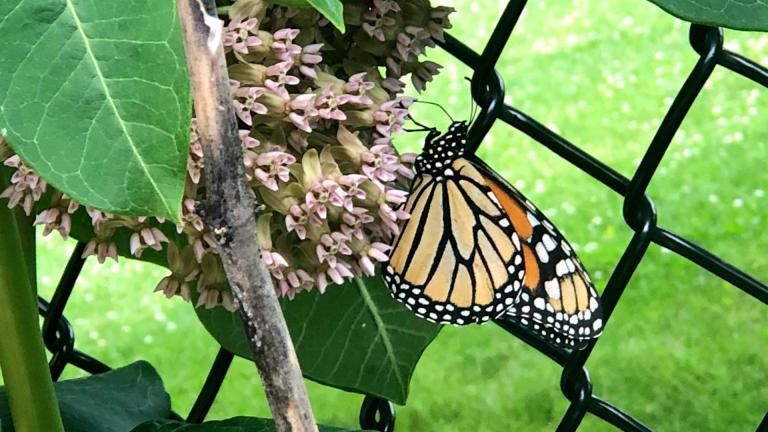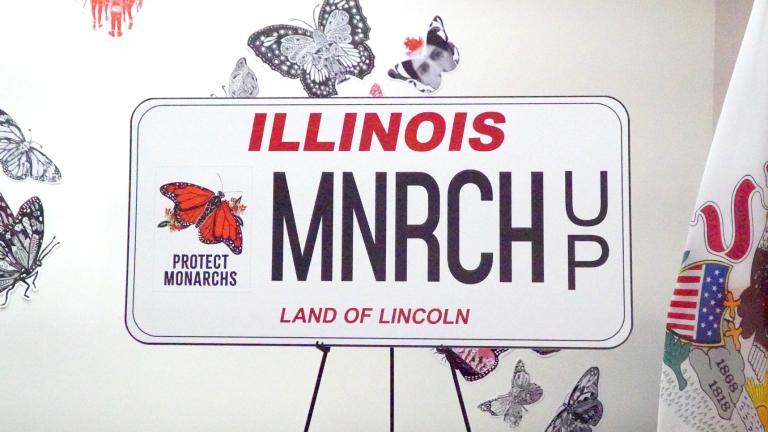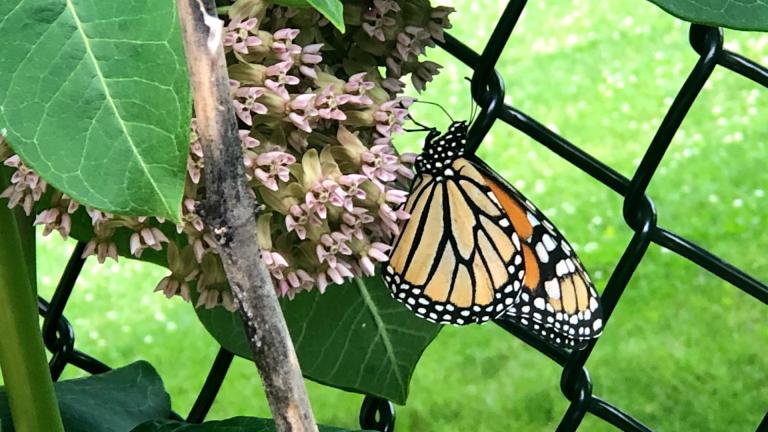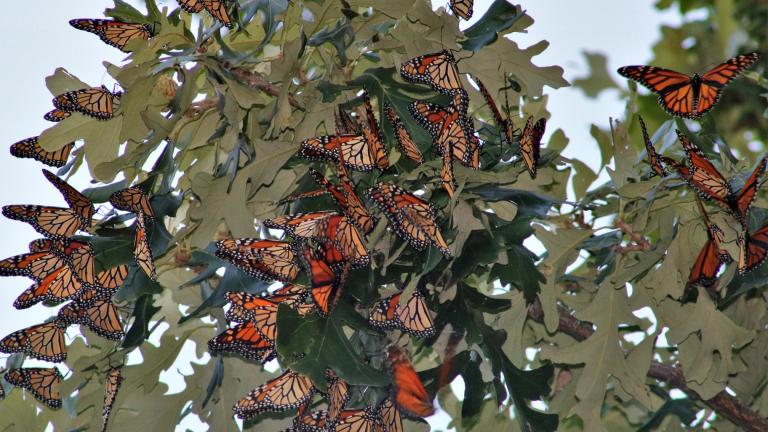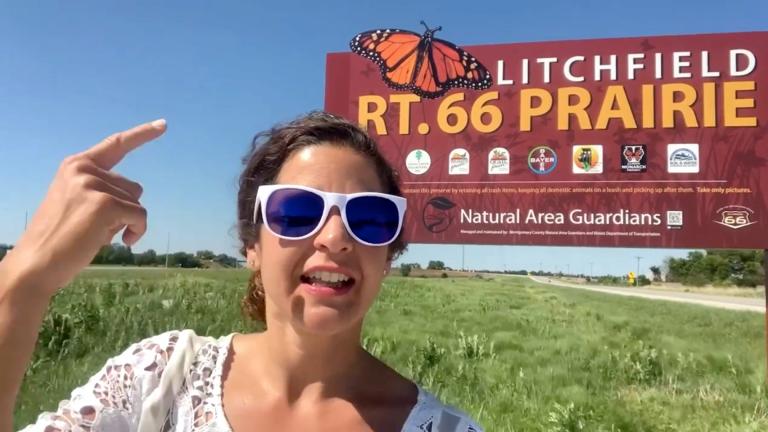 A monarch butterfly on butterfly milkweed. (U.S. Fish and Wildlife Service Midwest Region / Flickr)
A monarch butterfly on butterfly milkweed. (U.S. Fish and Wildlife Service Midwest Region / Flickr)
The monarch butterfly is indeed endangered, just not endangered enough.
So says the U.S. Fish and Wildlife Service.
On Tuesday, in issuing its long-awaited decision on the status of the monarch, the agency stated that adding the butterfly to the endangered species list “is warranted but precluded by work on higher-priority listing actions.”
In other words, the monarch is being wait-listed. Its status will be reviewed annually and, if still merited, the agency said it will propose to list the monarch in fiscal year 2024.
In a lengthy statement, the agency explains that there are 161 species rated a higher priority than the monarch. “These species include plants, insects, freshwater mussels, fish, birds and mammals. Obligations to meet court orders and settlements due to litigation can affect when the agency works on some species,” the statement reads.
It may not have been the decision the monarch’s champions were hoping for, but Doug Taron, curator of biology and vice president of research and conservation at the Peggy Notebaert Nature Museum, said the agency’s statement includes a number of positive takeaways, including the annual review.
“They’re not walking away from this,” Taron said. “They did say the listing has merit, so that’s good news. And even absent a formal listing, there’s all kinds of conservation work taking place around the monarch will keep going. I don’t believe this spells the death knell for the species. The monarch is not hanging on by such a slender thread.”
The Fish and Wildlife Service has been conducting an in-depth status assessment related to the monarch since receiving a petition in 2014 to place the butterfly on the endangered species list. That petition was prompted by dramatic declines in the monarch’s North American population, which is where 90% of the butterflies are found. According to the service, the monarch’s eastern population dropped from 384 million in 1996 to a low of 14 million in 2013, rebounding to 60 million in 2019. The western population, located in California, fell more precipitously, from 1.2 million in 1997 to fewer than 30,000 in 2019.
As part of its assessment, the agency evaluated threats to the monarch, including habitat loss, climate change and exposure to pesticides.
Unquestionably, the disappearance of milkweed plants along the monarch’s migratory route has contributed to the precariousness of the species’ future. Monarchs lay their eggs exclusively on milkweed, which is the sole source of food for monarch caterpillars. The plant’s range tends to overlap with agricultural areas, Taron said, and when Roundup Ready corn came along, it completely shifted the balance of power toward farming. Milkweed can’t tolerate herbicide applications the same way that modified corn can.
Re-establishing milkweed is the primary thrust of conservation efforts. On the one hand, given the vast range of the monarch — its migration stretches from Canada to Mexico — the affected area is enormous. “That’s a big hurdle to overcome,” Taron said.
On the other hand, Taron said he’s hard-pressed to think of another species whose survival involves something as simple as planting a flower in people’s back yards.
“There are some things that make it more tractable and some that make it more challenging,” Taron said.
One promising opportunity to increase monarch- and pollinator-friendly habitat across huge swaths of acreage was announced earlier in 2020.
A nationwide Candidate Conservation Agreement with Assurances (CCAA) lays out a formal process for power companies, railroads and departments of transportation to voluntarily convert portions of their respective rights-of-way to habitat that will support monarchs and other pollinators.
The agreement is administered by the University of Illinois-Chicago’s Energy Resources Center (UIC-ERC). Iris Caldwell, program manager for UIC-ERC, said 21 applications have been submitted to enter the agreement.
“Interest is still quite high,” said Caldwell.
Aurelia Skipwith, U.S. Fish and Wildlife Service director, reiterated the agency’s commitment to the monarch and its habitat.
“Our conservation goal is to improve monarch populations, and we encourage everyone to join the effort,” Skipwith said in a statement.
Learn more about how individuals and communities can get involved.
Contact Patty Wetli: @pattywetli | (773) 509-5623 | [email protected]

